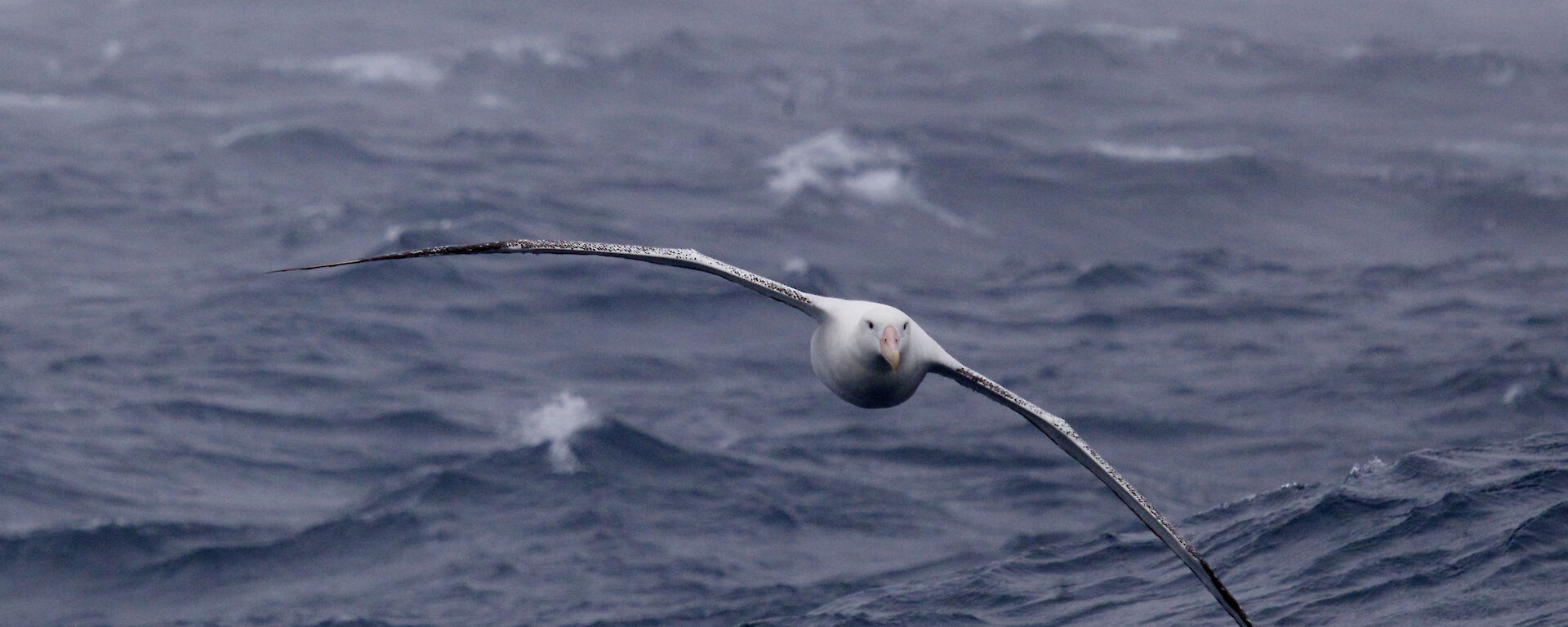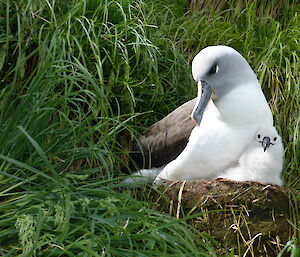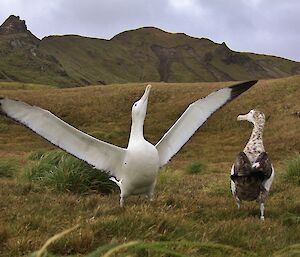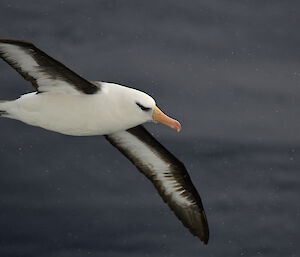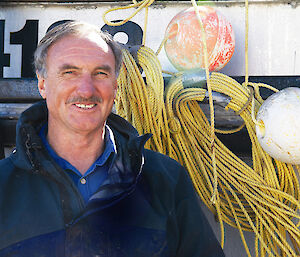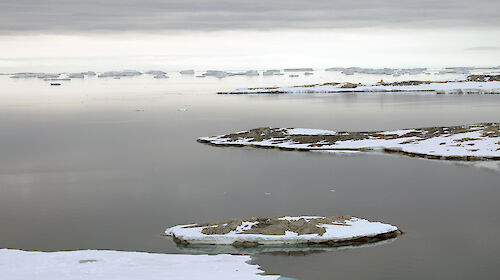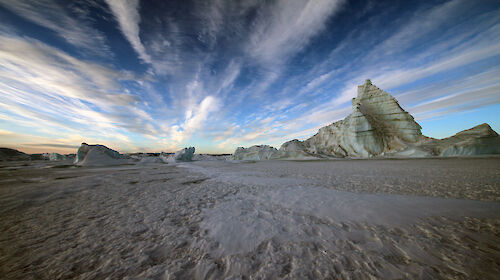The admiration for albatrosses by seabird scientists, including the Australian Antarctic Division’s Dr Barbara Wienecke, is immediately apparent.
“To stand anywhere near a cliff when an albatross is about to take off is just a sight to behold,” Dr Wienecke said.
“These beautiful birds spend so much of their life in the air without beating a wing… it’s extraordinary.”
Also apparent is the devastation they feel at the loss of so many albatrosses and other seabirds drowning on commercial trawl and longline fisheries around the world.
Albatrosses tend to swallow baited hooks near the surface, while deeper diving seabirds, such as petrels and shearwaters, get their wings or feet caught on the hooks as the lines sink.
This has led to 17 of the 22 albatross species being placed on the International Union for the Conservation of Nature (IUCN) Red List of Threatened Species.
Conservation science meets primary industry
The terrible loss of life galvanised scientists, like former Australian Antarctic Division seabird ecologist Dr Graham Robertson, to devote their careers to finding ways to protect seabirds.
Dr Robertson spent decades working with longline fishing boats to develop line weighting and other technologies that quickly removed baited hooks from the surface.
“I mainly focused on methods to expedite the sink rate of baited hooks in the upper regions of the water column, and applied that through all the main commercial longline fisheries that take seabirds in the world,” Dr Robertson said.
“The most successful project I worked on was developing fast sinking lines for the toothfish longline fisheries in the Southern Ocean and around New Zealand in the 1990s.
“All the boats that used that particular fishing practice adopted the new gear, and we reduced the bycatch of seabirds from about 1000 a year to zero.”
Dr Robertson’s work at the interface of industry, science and policy has seen a range of ‘conservation measures’ to protect seabirds adopted by the Commission for the Conservation of Antarctic Marine Living Resources (CCAMLR), which regulates fisheries in the Southern Ocean.
As a result, he said the longline fishery in the Southern Ocean is “albatross friendly” and “global best practice”.
Continued threats
However, seabirds still face fishing threats in other parts of the world, and will continue to do so given their range and biology, according to Australian Antarctic Division seabird biologist Dr Jaimie Cleeland.
“We know albatrosses don't abide by geopolitical boundaries, and they cross wide ocean basins, so the threats they face are uneven throughout the oceans,” Dr Cleeland said.
“Albatrosses will always be very vulnerable to fishing and artificial increases in mortality because of their slow breeding.
“It may take them several years of courtship before they finally lay an egg, and it takes quite a long time before the chick fledges.
“Once it’s fledged, that chick may be at sea for between five to 15 years before it returns to the colony to breed.”
The birds also face other threats.
“Our planet is changing,” Dr Cleeland said.
“There's changing wind patterns around the Southern Ocean that affect albatross’ flight, and potentially how they find food and whether that food is available to them. We also see invasive species on many albatross islands, and those species may change the habitat where these albatross breed or they may prey on the adults or chicks.”
A better world for albatrosses
But there are islands of hope, including Macquarie Island, where a successful rabbit and rodent eradication program, completed in 2014, has seen seabirds’ breeding habitat recover.
Decades of conservation monitoring on the island by the Australian Antarctic Division, and the Tasmanian Parks and Wildlife Service and Marine Conservation Program in the Department of Primary Industries, Parks, Water and Environment, has found that some threatened seabirds are beginning to recover – including the black-browed albatross.
“I hope that we can continue to work together across fisheries management, across island conservation, and with our climate change strategies, to reduce some of these compounding threats and really create a better world for albatrosses,” Dr Cleeland said.
“If we can have these multi-pronged investigation and conservations solutions, we’re going to do much better at achieving population recovery.”

